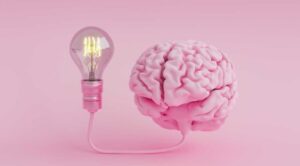Cognitive Neuroscience and Neuromarketing
Neuroscience has been developing at an ever-increasing pace in recent years, illuminating the complex mental and emotional processes of the brain. In this context, Electroencephalogram (EEG, brain electrical activity) and functional Magnetic Resonance Imaging (fMRI, brain blood circulation) methods, which allow the measurement of brain activity without causing any pain or damage to the subject, are important scientific tools. Over the last 20 years, thousands of studies conducted with both methods in normal healthy individuals have generated a significant body of knowledge on the biological mechanisms underlying the brain’s processes of attention, perception, learning, emotional arousal and decision-making (cognition). The fields of neuro-economics and neuromarketing are emerging applications of this knowledge.
Both methods have significant advantages over implicit discourse and indirect measurement methods based on eye movements or facial gestures. While implicit discourse and indirect measures often do not yield reliable results due to differences in the capacity of individuals to express their mental processes and are significantly influenced by the interviewer or the interview setting, the underlying neuroscientific measures, which reflect the various stages of the perception process, are independent of such external influences. As such, they offer a new scientific window into understanding consumer behavior and its underlying causes.
However, the main point to be considered when applying the data provided by neuroscience to applied fields such as neuromarketing is that the measurements should be carried out with the seriousness and precision of scientific research.
EEG Measurement Technology
Today, the introduction of devices that measure EEG signals with cheap circuits and that can be easily used by any user, mostly for purposes such as managing game consoles with brain waves, has paved the way for groups without expertise in EEG to operate in the field of neuromarketing with such devices with very low measurement accuracy. However, there are many studies and scientific publications showing that these devices do not provide reliable measurements of EEG signals. Our experience is that the signal-to-noise ratio of these devices does not allow us to obtain findings that we can easily obtain with research/medical grade devices. More importantly, the scores such as engagement, excitement, frustration, etc. that these devices produce from the EEG signal for gaming purposes have no scientific validity. Nevertheless, these scores are used for neuro-marketing purposes.
Furthermore, the EEG signal is easily contaminated by much larger electrical activity from sources such as head muscles, eye movements, etc. Since no algorithm has yet been developed to reliably eliminate such noise automatically, the measurements must be reviewed by a Cognitive Neuroscience expert to remove these artifacts before analysis.
Event-related Brain potentials (ERP)
An important shortcoming/error in the widespread neuromarketing practices is that a scientific measurement requires an experimental design based on a hypothesis. Without any hypothesis/experiment design to obtain reliable information about the brain, the results that can be obtained by measuring on-going brain activity (on-going EEG) while a person is making observations similar to those during daily life (e.g. watching an advertising video) have very limited power. Such measurements can only provide a rough indication of a person’s level of alertness, emotional arousal and stress.
On the other hand, by repeating static visual or auditory stimuli derived from EEG and presented within the framework of an experimental design many times and analyzing the EEG signals obtained in temporal relation to them, it is possible to measure the brain’s responses to these stimuli specifically. These measurement techniques are called event-related potentials (ERPs) and event-related oscillations (EROs). These methods enable highly accurate measurements of the brain’s mental processes such as attention, memory storage, retrieval, semantic processing and decision-making in response to specific stimuli. The great success of Cognitive Neuroscience in the last 20 years is based on this measurement methodology.
In order to effectively apply ERP and ERO methods to market research, the marketing question must first be defined in the best possible way, an appropriate experimental design must be developed, measurements must be taken by expert researchers with reliable instruments, noise must be removed, and the results must be interpreted by sophisticated analysis methods. In this context, market researchers and neuroscientists need to work together in close contact.
The most important gains of this method, which is much more comprehensive and laborious than the common approach in practice, can be summarized in the following two points:
The findings are not open to speculation and interpretation, but are presented within the limits of scientific prescription and statistical significance. When it comes to major conceptual steps, such as the development of a new marketing strategy, it enables the reliance on data whose reliability has been rigorously tested.
The range of questions that can be addressed within the framework of in-depth preliminary work with the marketing team is vast. In this context, instead of simply answering a simple question, such as the extent to which an advertising video or package design stimulates a person, which is often open to interpretation, it is possible to answer much more specific conceptual questions, such as what associations the product makes in the consumer’s mind, what is the appropriate brand slogan on which to base a marketing strategy, in what ways the product is perceived to be different from alternative products, and in what way this difference exists.
Kaynak: Prof. Dr. Tamer Demiralp, İstanbul Üniversitesi, İstanbul Tıp Fakültesi, Fizyoloji Anabilim Dalı




